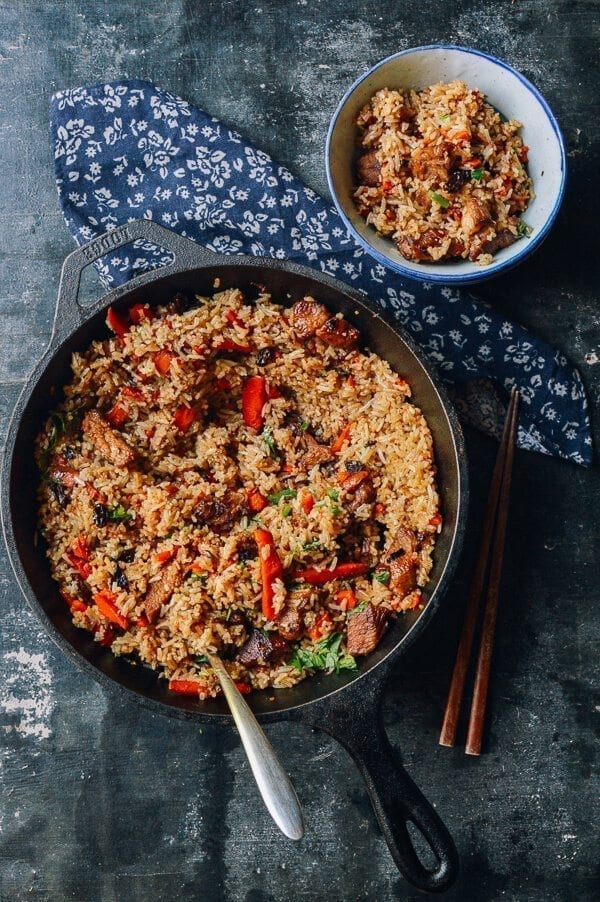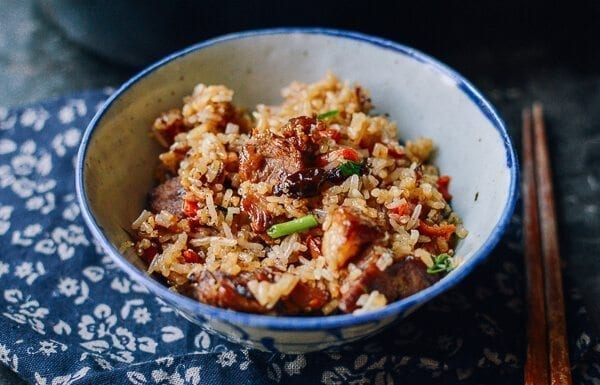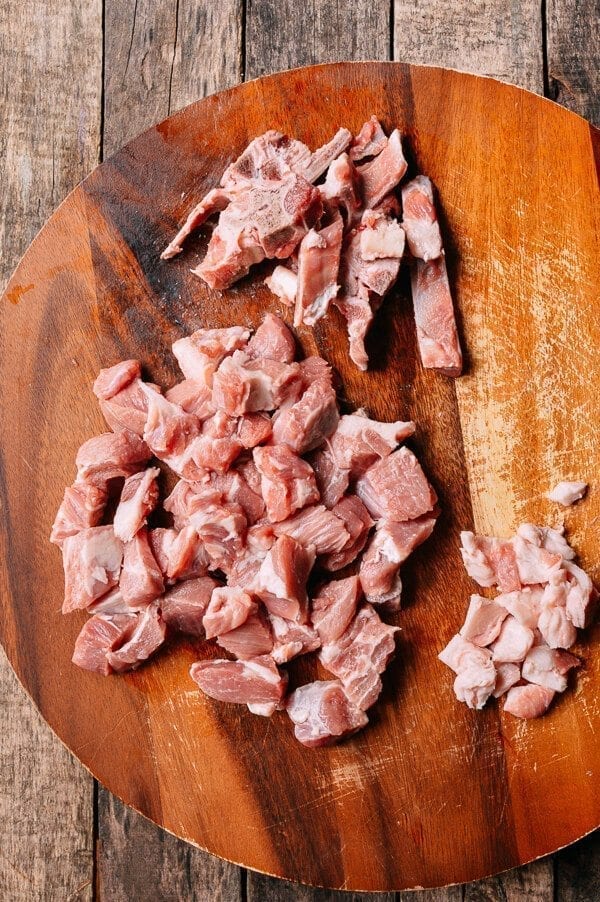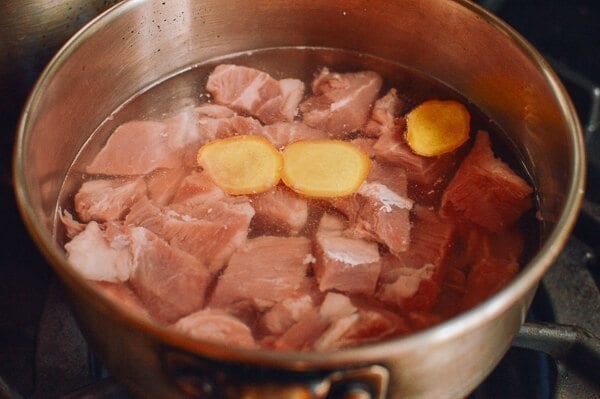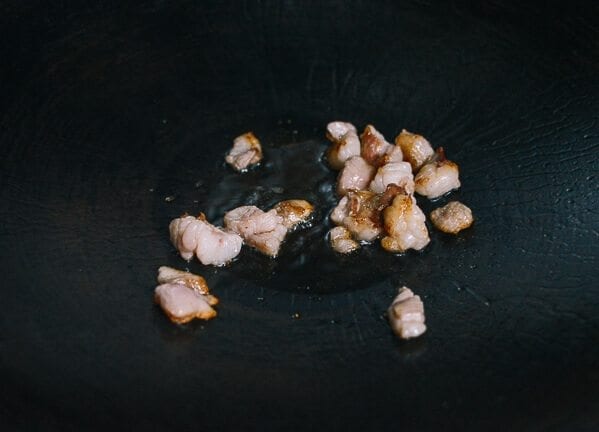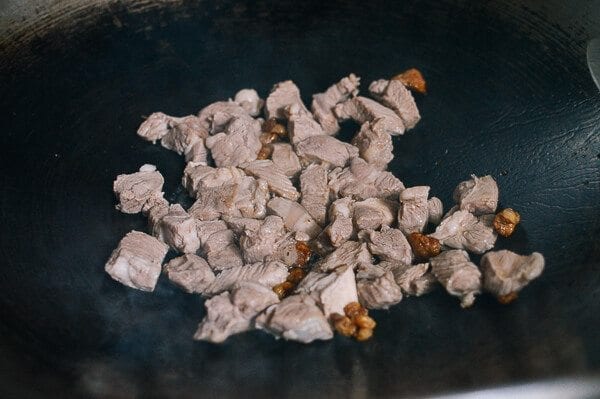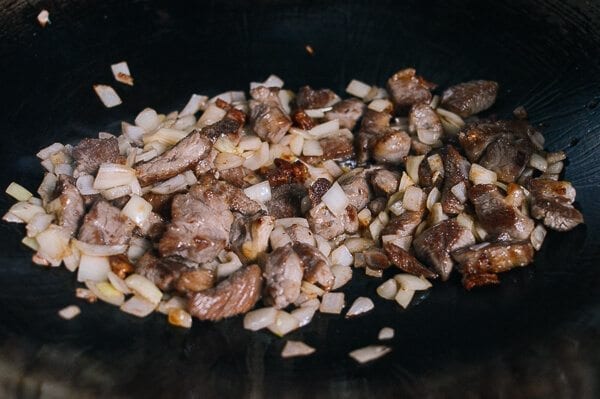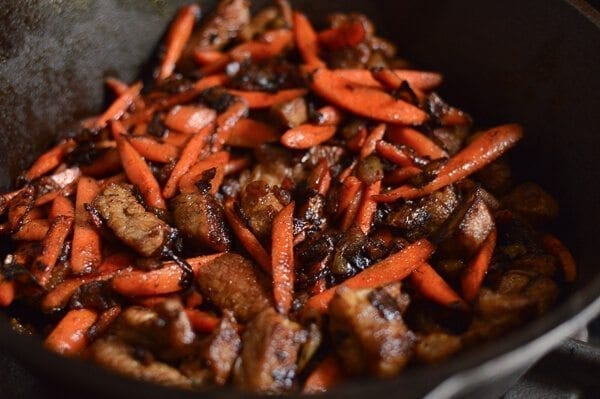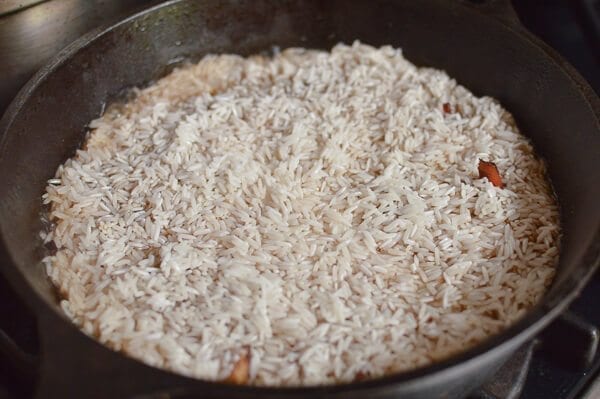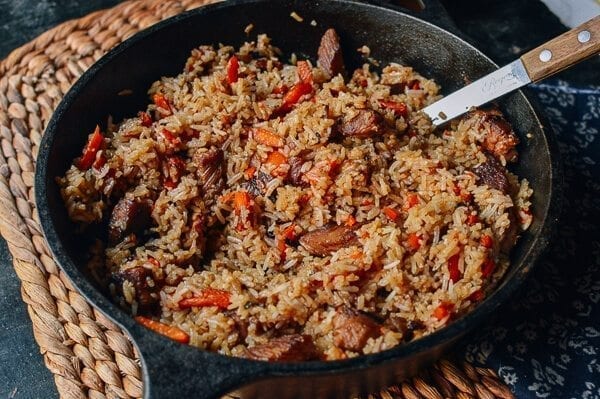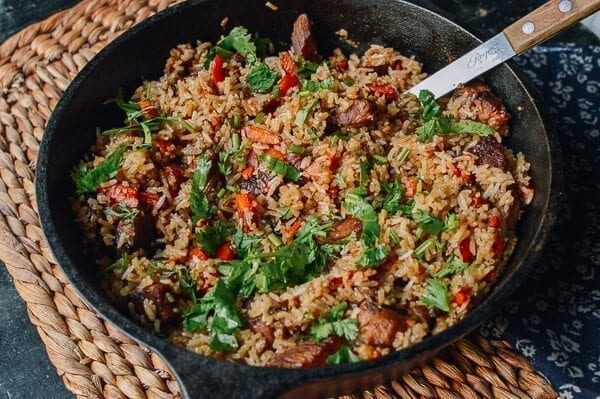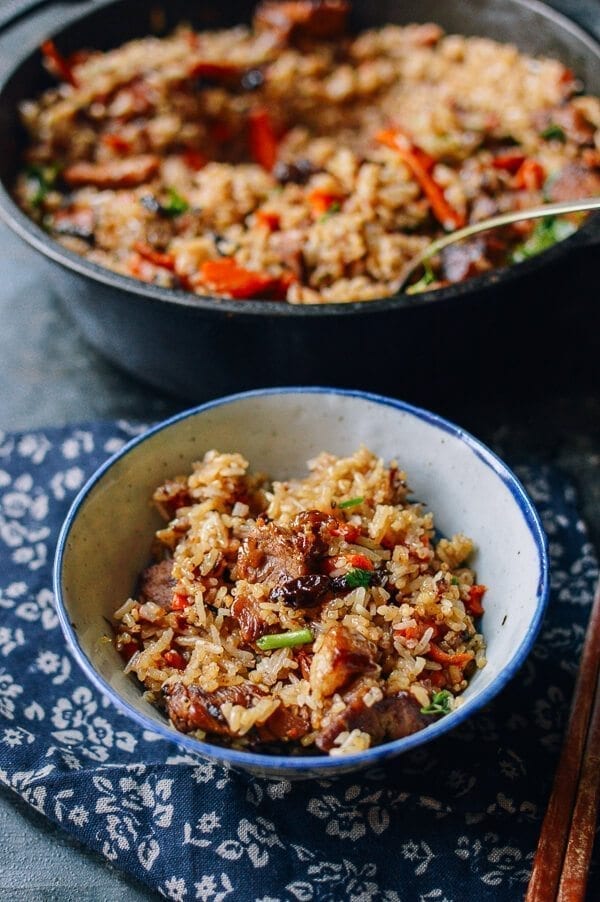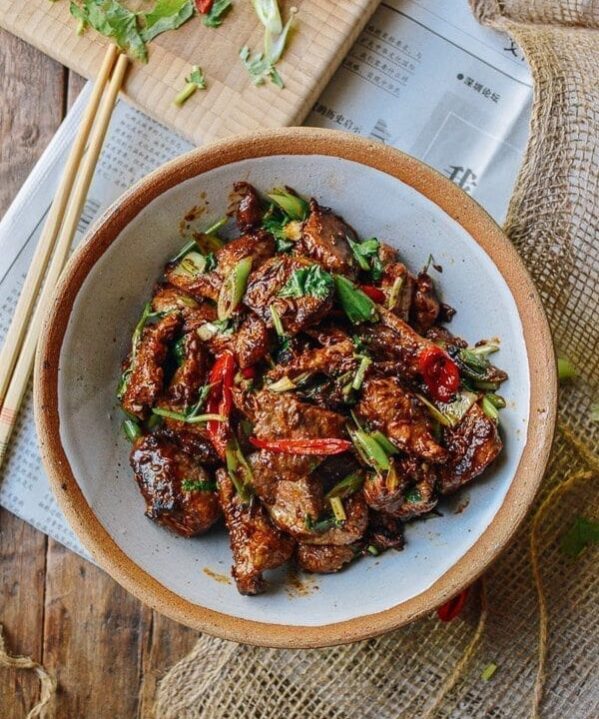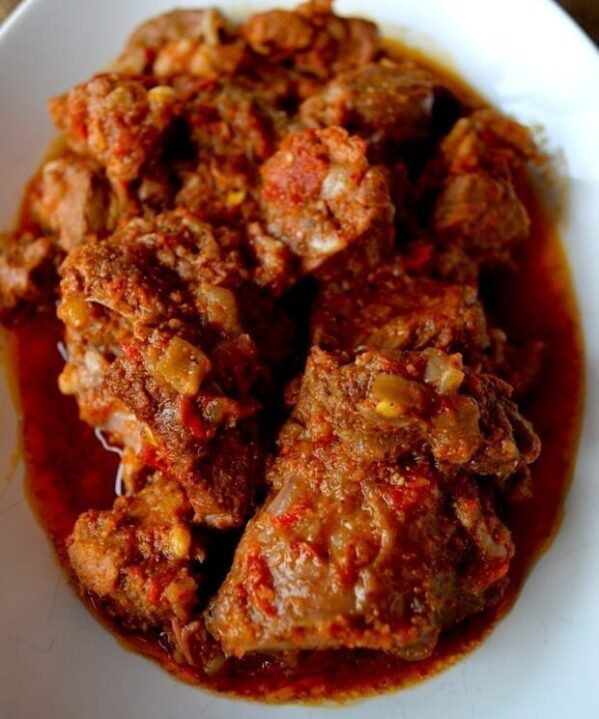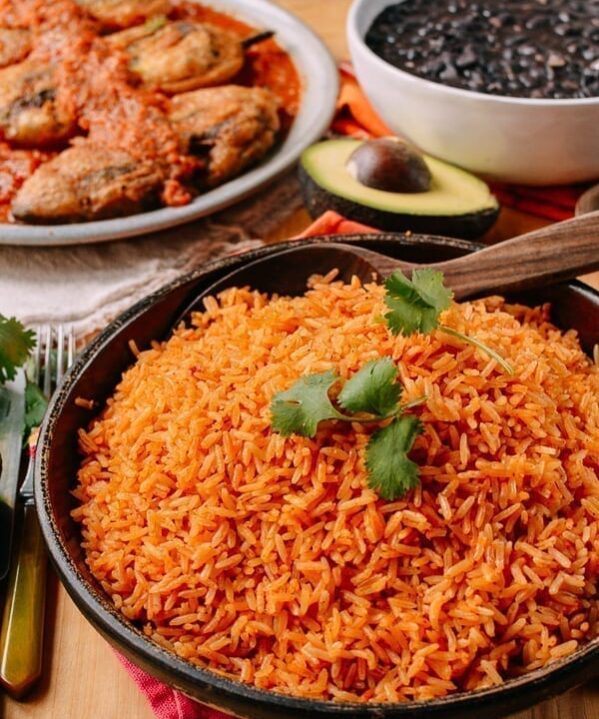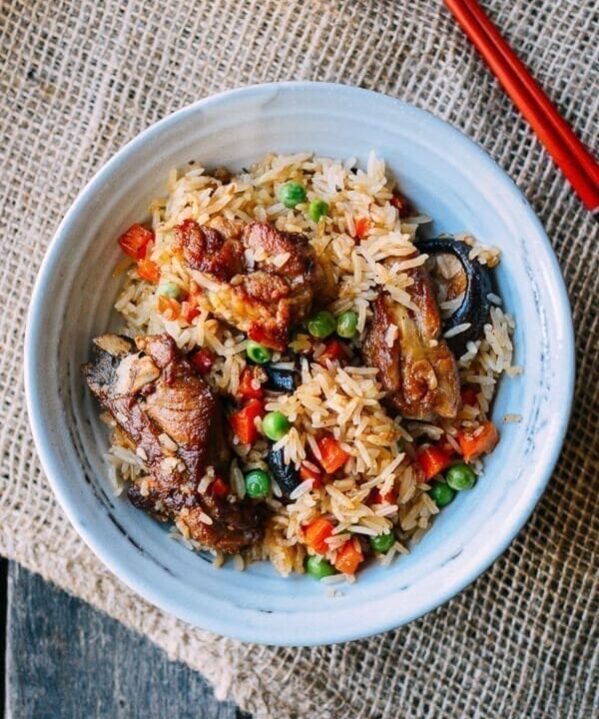This Lamb Rice or Xīnjiāng shou zhuā fàn in Mandarin (新疆手抓饭) is a signature dish in Xinjiang home-cooking. It’s very special and usually reserved for holidays only—for good reason. Sheep are a precious commodity for Xinjiang or Uyghur people. Their wool is a good source of income, and their milk is an essential part of their daily diet.
Discovering Uyghur Street Food
Do you remember reading about our trip to Xi’an’s Muslim Street and the amazing street food we tried there? We’re huge fans of that style of cooking. Recipes include Lamb Skewers, Big Plate Chicken, and Cumin Lamb, just to name a few Xinjiang Uyghur classics we have already posted.
During our recent trip to Shanghai, we found out that there is a smaller, similar street food event every Friday from 11:00 to 4:00 by the street corner of (澳门路/Aomen Lu) and (常德路/Changde Lu ).
If you find yourself in Shanghai on a Friday, make sure to get there early, because a lot of the carts sell out very quickly, and this Xinjiang Lamb Rice was one of the foods that had disappeared by the time we arrived. Bill and I only saw the bottom of two GIANT woks sitting empty with a few lonely grains of rice—a painful reminder of what we’d missed.
Since we did not get to try the lamb rice, I was on the hunt for it over the next few days. Bill and I would regularly go restaurant hopping, going into one restaurant and ordering the best thing on the menu (one dish, sometimes two, max), before moving on to the next restaurant and repeating that same process until we couldn’t eat anymore.
It’s our solution to the limitations on both time and meals while we travel. So for this lamb rice dish, we ended up trying several versions at different restaurants. Here are my findings: this Uyghur lamb rice dish is surprisingly mild. The richness of the dish comes from the combinations of lamb fat and sweet carrots. It’s super comforting, and it’s great as either a side dish or a main course.
The fact that this humble, homey dish has made its way into the mainstream with the rise of the middle class in China is telling. I am sure it will soon make its way overseas to your corner of the world. But in the meantime, you can try it out with this recipe, especially if you like lamb. The cooking method is very similar to that of our Rice Cooker Ribs and Rice recipe, which many of you have tried and loved!
Recipe Notes
A few notes before we begin:
- It’s very important to pick fatty lamb and to separate out the fatty pieces.
- Instead of a rice cooker, you can use a regular pot to cook the rice, but remember to add some onion/carrot mixture to the bottom of the pot to prevent the rice from sticking and/or burning.
- The amount of liquid used to cook the rice should be 15% to 20% less than usual, because there will be additional moisture from the onion, carrots and lamb.
Recipe Instructions
Soak the jasmine or long grain white rice for 30 minutes. Drain and set aside.
While the rice is soaking, blanch the lamb by boiling 4 cups of water in a pot along with the lamb and ginger. Let it boil for a couple of minutes, and then turn off the heat. Use a slotted spoon to pick out the lamb pieces and set them aside, making sure to drain off any excess water. Then use a fine mesh strainer to strain the cooking liquid. Reserve that liquid to cook the rice.
Now heat the oil in a wok over high heat. Add ONLY the fatty lamb pieces, and stir-fry to get a nice crust on them. Turn the heat down to medium low, and render the fat until the pieces start to turn golden brown, about 6 to 8 minutes.
Turn the heat to medium, and add the onion. Cook until the onion is translucent. Now turn the heat back up to high and add the blanched lamb in a single layer so as to brown the meat on all sides. This will take a few minutes
Add 2 1/2 cups of the cooking liquid you reserved earlier, along with the salt, soy sauce, and cumin powder, and mix everything well. Cover and simmer for 20 minutes.
Now add in the carrots and raisins (if using), and cover for another minute to bring the mixture back up to a boil. Turn off the heat. (Don’t worry, the carrots will finish cooking in the rice cooker. Also, at this point, the taste will be on the salty side, but remember that it will mellow up once mixed in with the rice.)
Pour everything into the rice cooker (or a pot––we cooked it in a cast iron pot this time), and add the rice. The rice should be spread out evenly. There should be enough liquid to see peeking through the rice grains (you may need to add more water if needed), but the liquid level should not be above the rice.
Cover and start the rice cooker. If you are using a pot, turn the heat up to medium high to bring the mixture to a simmer, cover, turn the heat down to low, and cook for 15-20 minutes.
Once the rice is done cooking, open the lid, mix everything together, add salt to taste (if necessary) and enjoy.
If you want to get a little fancy and add more color to the dish, you can garnish with chopped cilantro.
Xinjiang Lamb Rice
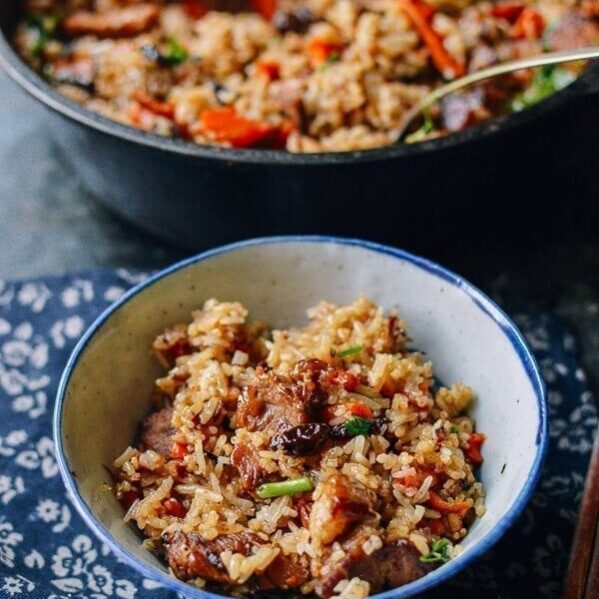
Ingredients
- 2 cups uncooked white rice
- 2 pounds fatty lamb (900g, cut into 1/2 inch chunks, separate out the fatty pieces from the lean meat)
- 4 cups water
- 3 slices ginger
- 3 tablespoons oil
- 1 medium onion (diced)
- 2 teaspoons salt
- 2 teaspoons soy sauce
- 1 teaspoon cumin powder
- 1 pound carrots (cut into thin strips)
- ¼ cup raisins (optional)
Instructions
- Soak the rice for 30 minutes. Drain and set aside.
- While the rice is soaking, blanch the lamb by boiling 4 cups of water in a pot along with the lamb and ginger. Let it boil for a couple of minutes, and then turn off the heat. Use a slotted spoon to pick out the lamb pieces and set them aside, making sure to drain off any excess water. Then use a fine mesh strainer to strain the cooking liquid. Reserve that liquid to cook the rice.
- Now heat the oil in a wok over high heat. Add ONLY the fatty lamb pieces, and stir-fry to get a nice crust on them. Turn the heat down to medium low, and render the fat until the pieces start to turn golden brown, about 6 to 8 minutes.
- Turn the heat to medium, and add the onion. Cook until the onion is translucent. Now turn the heat back up to high and add the blanched lamb in a single layer so as to brown the meat on all sides. This will take a few minutes. Add 2 1/2 cups of the cooking liquid you reserved earlier, along with the salt, soy sauce, and cumin, and mix everything well. Cover and simmer for 20 minutes.
- Now add in the carrots and raisins (if using), and cover for another minute to bring the mixture back up to a boil. Turn off the heat. (Don’t worry, the carrots will finish cooking in the rice cooker. Also, at this point, the taste will be on the salty side, but remember that it will mellow up once mixed in with the rice.)
- Pour everything into the rice cooker (or a pot), and add the rice. The rice should be spread out evenly. There should be enough liquid to see peeking through the rice grains (you may need to add more water if needed), but the liquid level should not be above the rice. Cover and start the rice cooker. If you are using a pot, turn the heat up to medium high to bring the mixture to a simmer, cover, turn the heat down to low, and cook for 15-20 minutes.
- Once the rice is done cooking, open the lid, mix everything together, add salt to taste (if necessary) and enjoy.
nutrition facts
